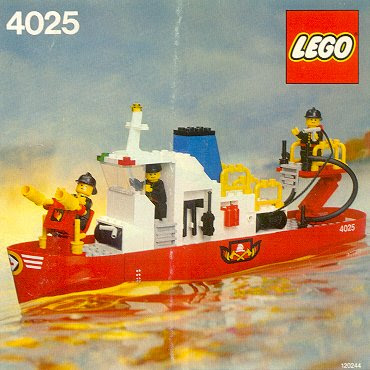The Castle theme is one of the most popular and longest running themes that The Lego Group has produced. Stretching back from the late 1970s all the way up to the present, it's a theme that many remember fondly. Castle construction itself has evolved over the years, from simple fortresses to mountainous strongholds. Today's castles have come full circle, imitating the infamous "Yellow Castle" released in 1978 with a similarly square and baseplate-less design. I will now take a look at how the castle has changed throughout the years in a multi-part series.
375: Castle
The first Lego castle, dubbed the "Yellow Castle" by many, serves as the prototype for many of the castels that The Lego Group produced over the years. Note the inclusion of horses (though most sets come with one, maybe two) and a bevy of soldiers (but no archers, which is interesting).
Moving onto the castle itself, we see a number of features. A drawbridge with a winch that can pull it up (some castles use this technique, but there are several other methods of drawbridge operation), towers, a back door, and ramparts along the top of the walls. While the castle clearly belongs to the Crowns faction (which made a surprising reappearance in 2009), note the inclusion of several other factions, all of which seem to be allies, which is a stark contrast to modern "battle in a box" sets. Thought unseen, the set has hinges which allow it to open up, another feature seen in many other sets. Lastly, the set includes a large, flat baseplate which becomes uncommon in later years.
6073: Knight's Castle
Released in 1984, this small Black Falcon outpost resembles the "Yellow Castle," along with other castles to be released later, in several ways. Both feature the basic design of a square fortress with a drawbridge (and raised Gatehouse) along with battlements on the walls. Additionally, we again see a large back door and the ability to open up the castle as both a play feature and as a method to expand the size of the castle.
Although the design is similar, there are two major improvements. First, the castle is grey and even has some parts with stone details. This makes the castle not look absurd. Secondly, the horses are now molded pieces, as opposed to constructed ones. These look a lot better, and are the same molds used today. Unfortunately, there are much fewer minifigures in this set.
6080: King's Castle
Another set from 1984. This set features the Lions faction. The mid-1980s had two major factions, the Black Falcons and the Lions. The Black Falcons would eventually die out and be replaced by other factions, most of them evil. The Lions, however, have appeared in several different iterations, the most recent being the 2010 Castle theme. The 'good' faction generally gets the big castle, while the 'bad' faction gets the small one, so it can be surmised that the Black Falcons are enemies.
Regardless, here we have another large, grey castle with a drawbridge, square design, and the ability to 'open up.' One key addition, however, is the introduction of the portcullis (the large grate-like structure which can be lowered and raised vertically) which will appear in later sets (but as a specialized piece).
Ultimately, this is the largest castle up to this point, with twelve minifigures, four horses, and nearly 700 pieces. Both of these 1984 sets also introduced archers to joins the ranks of soldiers with swords, axes, and spears.
This concludes the first in a series of posts examining the evolution of the Lego Castle.





































